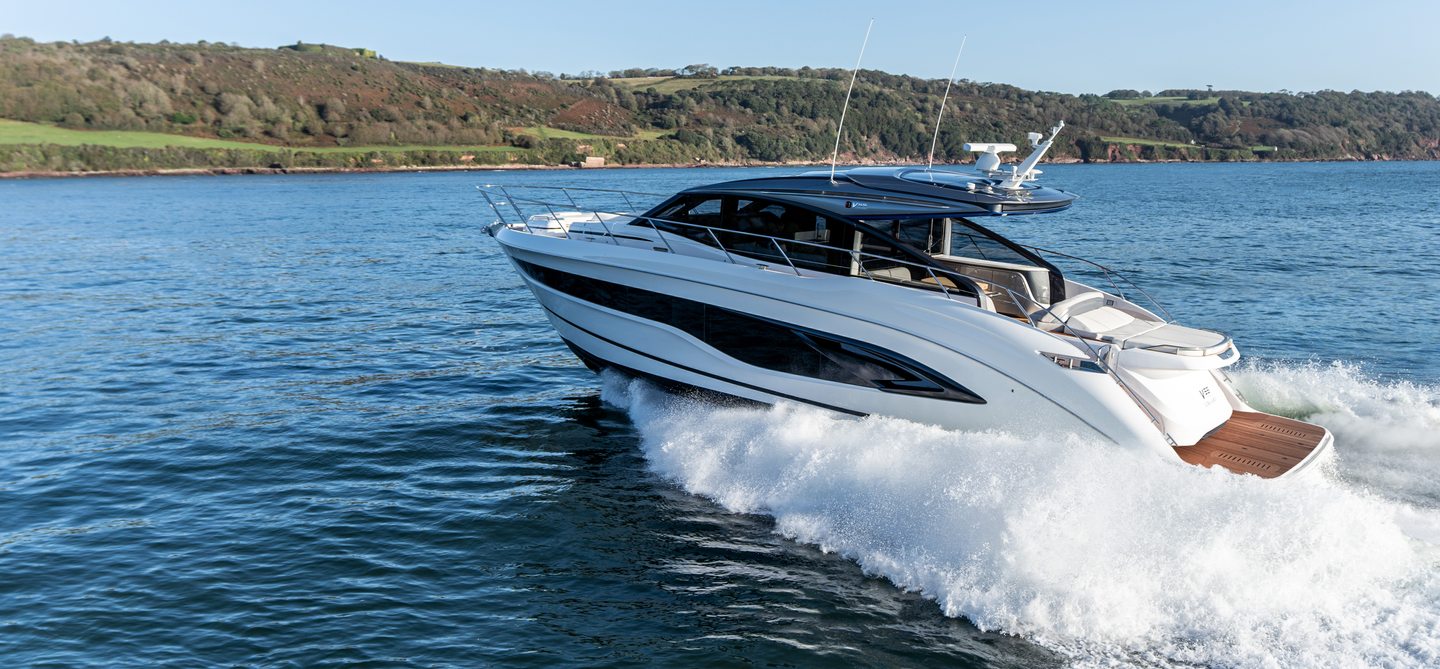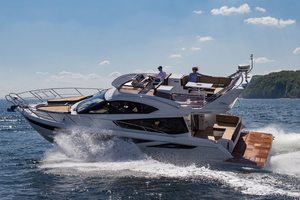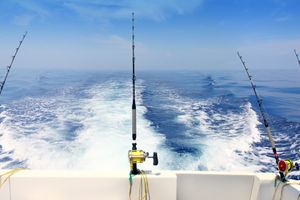Sports yachts represent a Mediterranean style of yachting, under the sun, with port-to-port blasts and bags of style. Described as the ultimate weekender, these yachts deliver a pure yachting experience, complete with luxury, speed and thrills.
At a Glance
- Sleek exterior profile
- Hardtop with sunroof
- Capable and responsive Vee hull design
- Good handling
- 30 knots + top speed
- Deck salon with seating and dining
- Large aft cockpit with seating and lounging
- Tender garage
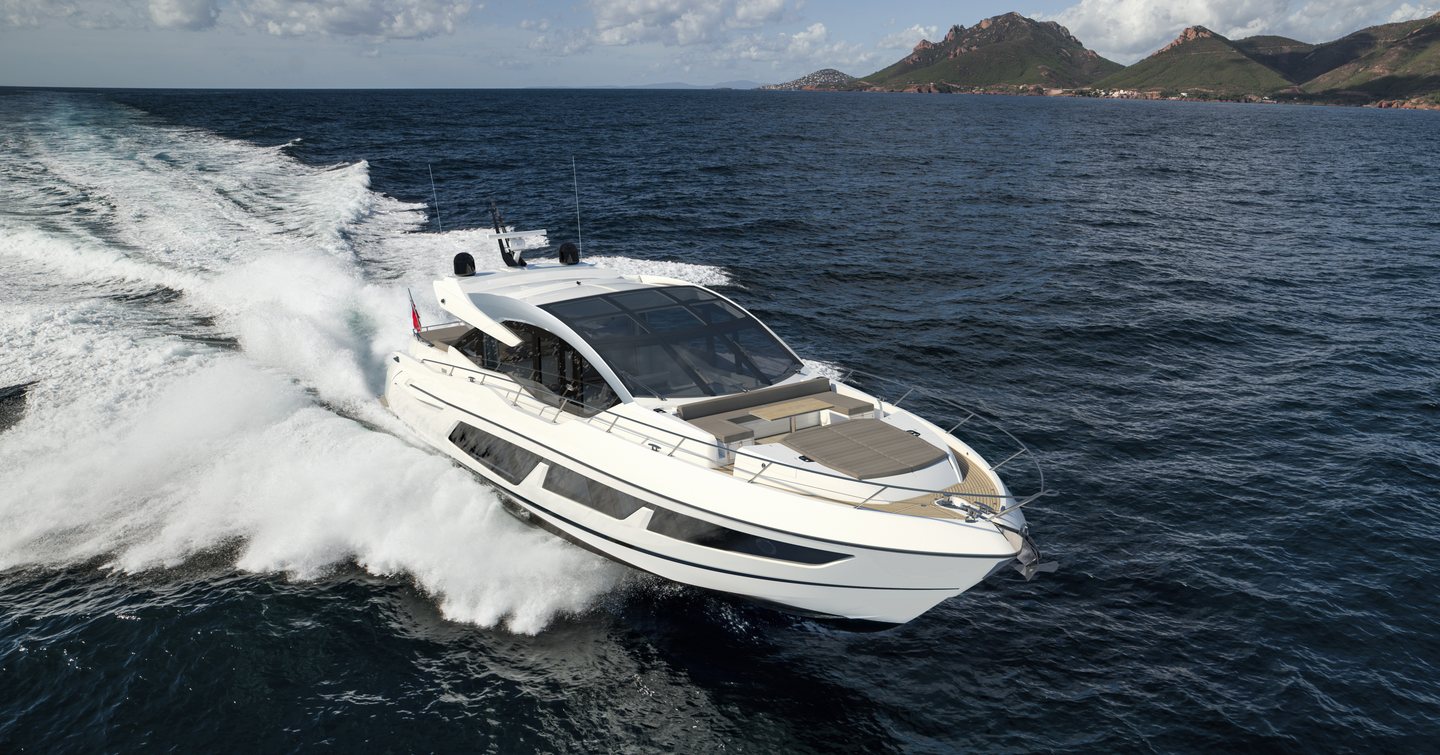
This is the type of yacht you want to drive, to take the wheel and feel the hull respond. Sports yacht performance requires a deep or variable Vee hull design with the power to push it beyond 30 knots.
A sports yacht, however, is also a cruising yacht, able to look after its guests for a night or a week in absolute comfort. The best new sports yachts manage this trilogy of style, pace, and space incredibly well, with luxurious and large interiors that are a match for any other cruising yacht design.
The big design change that elevated sports yacht luxury was unarguably the hardtop. Introduced in the late 90s on larger yachts, it trickled down into the 10m-20m sector and turned fairly utilitarian open cockpits into lavish deck salons.
Today, sports yachts start at around 8m (26ft) and go all the way up to superyacht sizes.
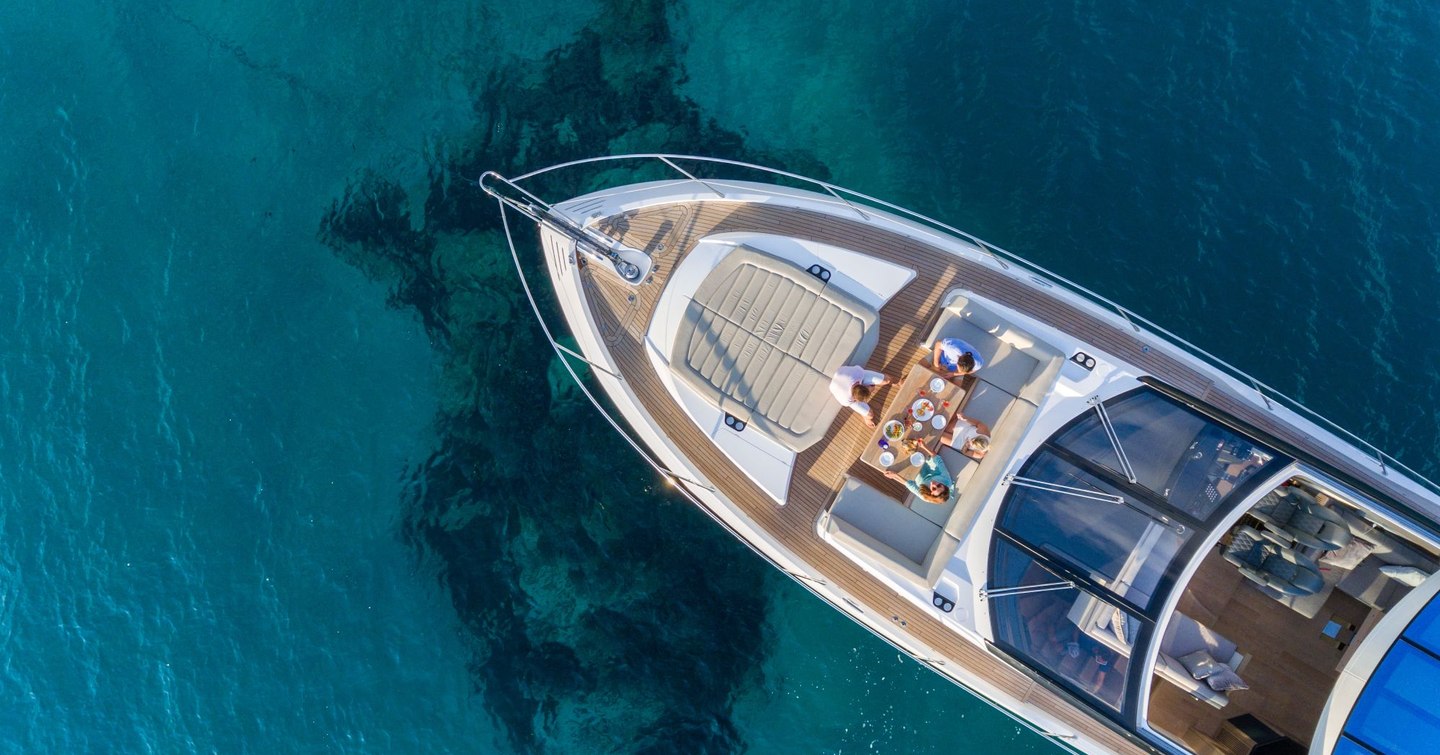
Perfect For:
- Weekending
- Family of four +
- Inshore and coastal use
Design Notes
Place a 1990s sports yacht next to a current-generation model of the same length and you might notice something peculiar. The new yacht will be a lot taller and wider.
Over the last 30 years, all yachts have gotten larger and more voluminous, and the same could equally be said for the flybridge design, but not to anywhere near the same degree as the sports yacht.
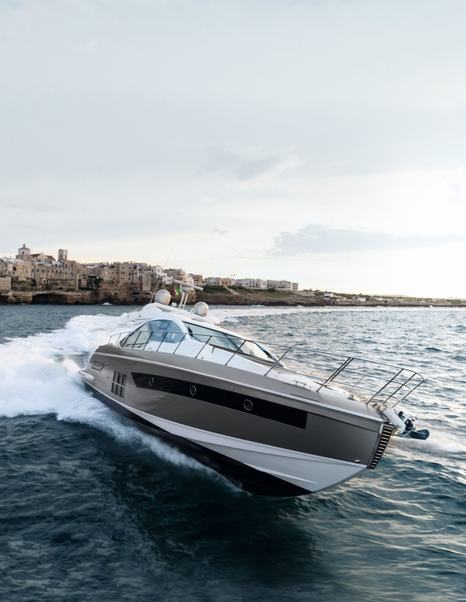
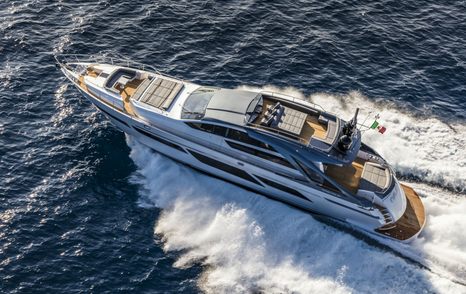

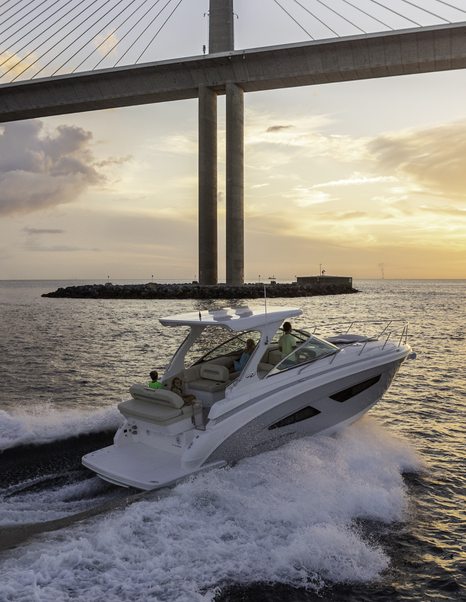
Sports yacht design has gone through a major evolution since the 1980s. Starting out as large sportsboats with some overnight accommodation, the emphasis heavily swayed towards keeping speeds up and the profile down. It was quite normal for a 12m (39ft) or even 15m (49ft) sports yacht not to enjoy full-standing headroom below decks, with separate cabins a rarity.
Today, the emphasis has been turned on its head. Sports yachts must now be highly accommodating, so they no longer feature such low profiles. They should, however, still be sleek, with a design that results in good volume and 2m (6ft) worth of headroom on the inside, but still looks fast on the outside.
The gains on internal space have largely been achieved by beefing up the beam and freeboard height, creating taller topsides that not only result in more internal space but also create a muscular look that is perfect for this yacht type.
Importantly, pushing up the freeboard also allowed the addition of another huge sports yacht design change, the hardtop, to be incorporated without drastically changing the vessel profile.
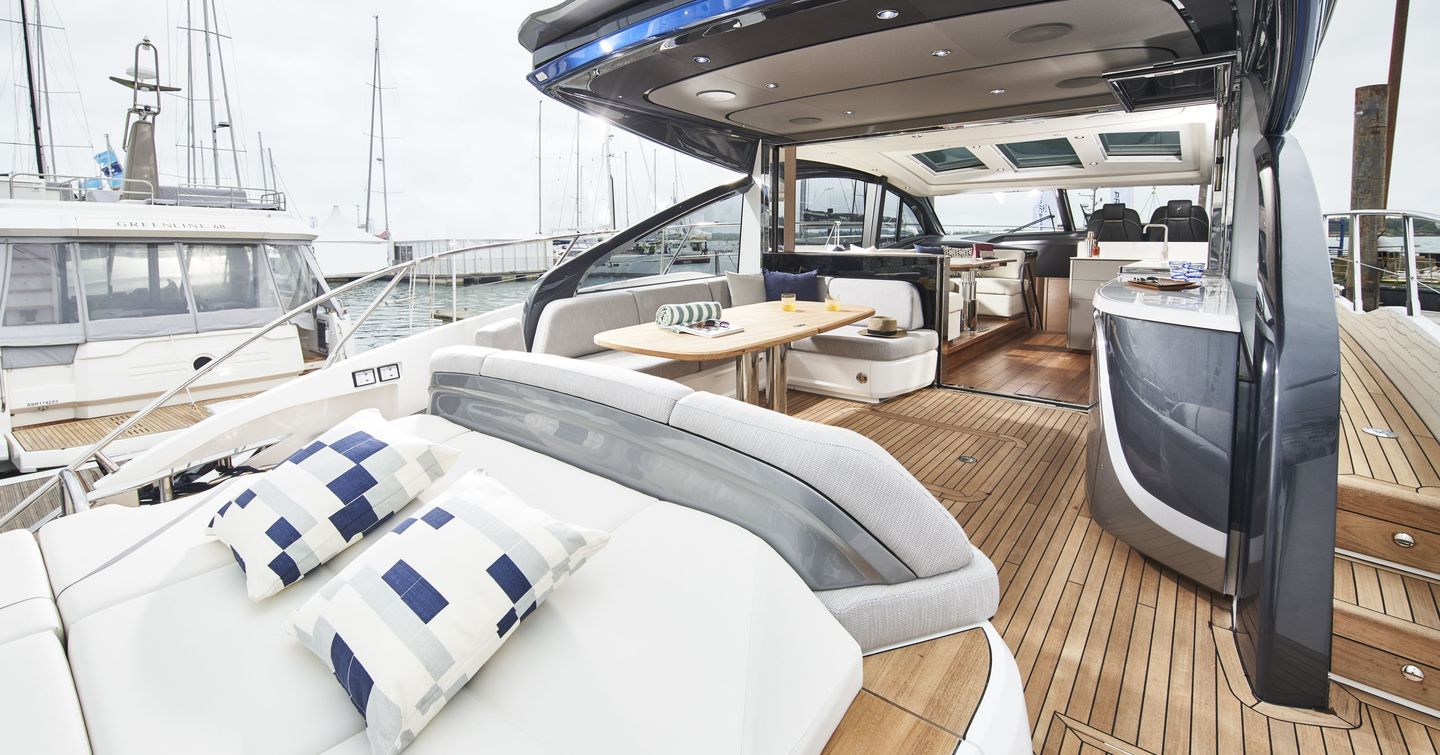
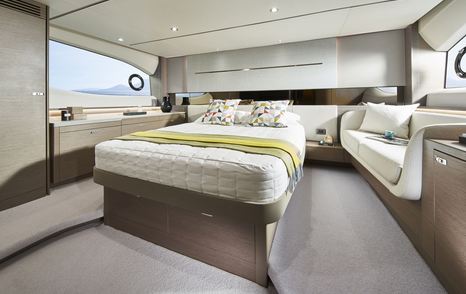

The Dawn of The Hardtop
The hardtop changed sports yacht culture forever. Before, you had wonderfully open but largely one-dimensional cockpits. If the weather was good and you only wanted to be out for a short time they were great.
If the weather changed, however, or you wanted to take a longer cruise, you were forced to engage the dreaded canopy system. Anyone who has tried to erect a large canopy on a moving yacht in the wind and the cold will know how tough this can be.

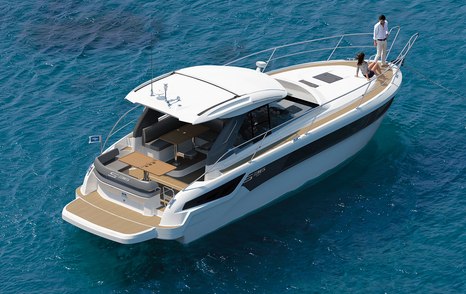
Cockpit to Salon
The open cockpit also had to be designed to be, well, open. That meant a washdown, saltwater-resistant finish that relied heavily on a gel coat and white vinyl.
The chrysalis effect of hardtops allowed cockpits to emerge as beautiful deck salons, and as hardtop design has evolved so has the salon itself. The hardtop now always comes with a large sunroof, while the use of glass to the sides and aft of the hardtop has become bigger and more versatile to create a near-open feel.
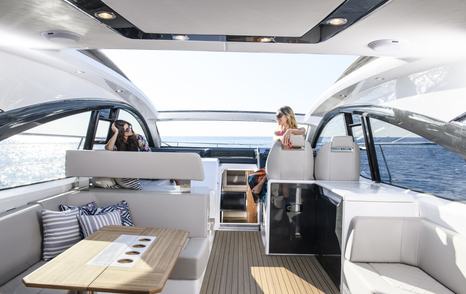

Typical Layouts: GAs
As we have seen, the relative size of sports yachts has increased massively, and particularly in the last 10 years. This has resulted in more voluminous hulls capable of delivering larger cabins that are on par with the flybridge equivalent — and sometimes because they are based on the same hull.
Where sports yachts can differ from flybridge models is with how many cabins they try to squeeze in, with sports models sometimes providing three cabins in comparison to a flybridge that might offer four.
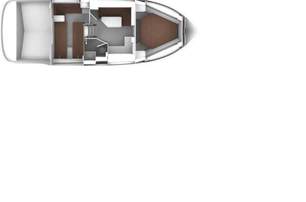
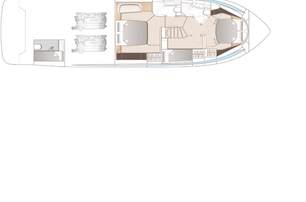
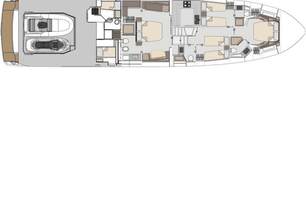
At deck level, smaller yachts will have a single run of the cockpit that will often include a wet bar and a barbecue. For larger, 12m (39ft) plus models, the aft cockpit is a real feature and is a focus of sports yacht life. A galley aft layout makes sense here, serving and connecting the interior salon and the deck.


Sports Yacht Features
A sports yacht can be an 8m (26ft) entry-level weekender or a superyacht — a super sports yacht if you will. But if the sports yacht holy trilogy of style, pace, and space is to be adhered to, the epicenter of sports yacht culture must be around 12-20m (39-66ft), where owner operation and that special driving experience peak while still delivering plenty of style and interior luxury.
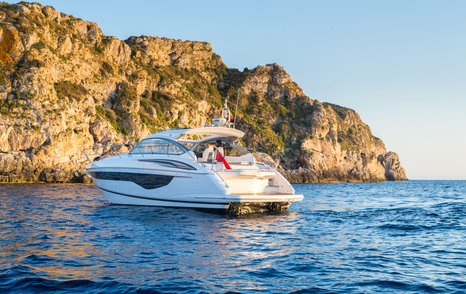

Many pedigree builders start their sports yacht ranges at around 12m (39ft) for the same reason, allowing them to create a well-balanced yacht with two decent-sized cabins.
Above 20m (66ft), the driving experience starts to become more remote and less responsive, morphing into a more typical cruising yacht experience, although there are some extremely powerful 30m (98ft), 50 knot exceptions.
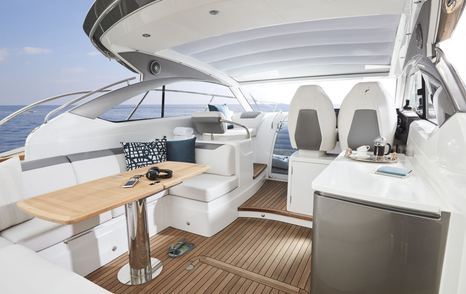
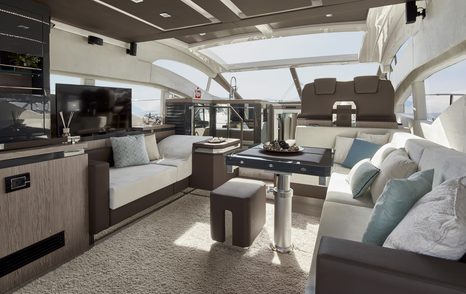

The hardtop is one of the key, make-or-break features of a sports yacht. The best ones not only create a great interior experience but also keep the exterior lines looking sleek and stylish.
Hardtop design continues to evolve, creating some superb features. Certain models benefit from excellent side windows and cockpit doors, if available, that slide right back to open up the salon and the deck beyond. It almost goes without saying, but a large sunroof is a must. Make sure it opens right up and if it has a glass roof make sure there are blinds to cover it.


The aft cockpit should be large and social, mixing lounging and dining options. Ideally, the relationship between the salon and the cockpit should be continuous, creating a long run of social space. For yachts of approximately 15m (49ft) and up, a forward cockpit normally comes into play, adding a whole new area to enjoy.
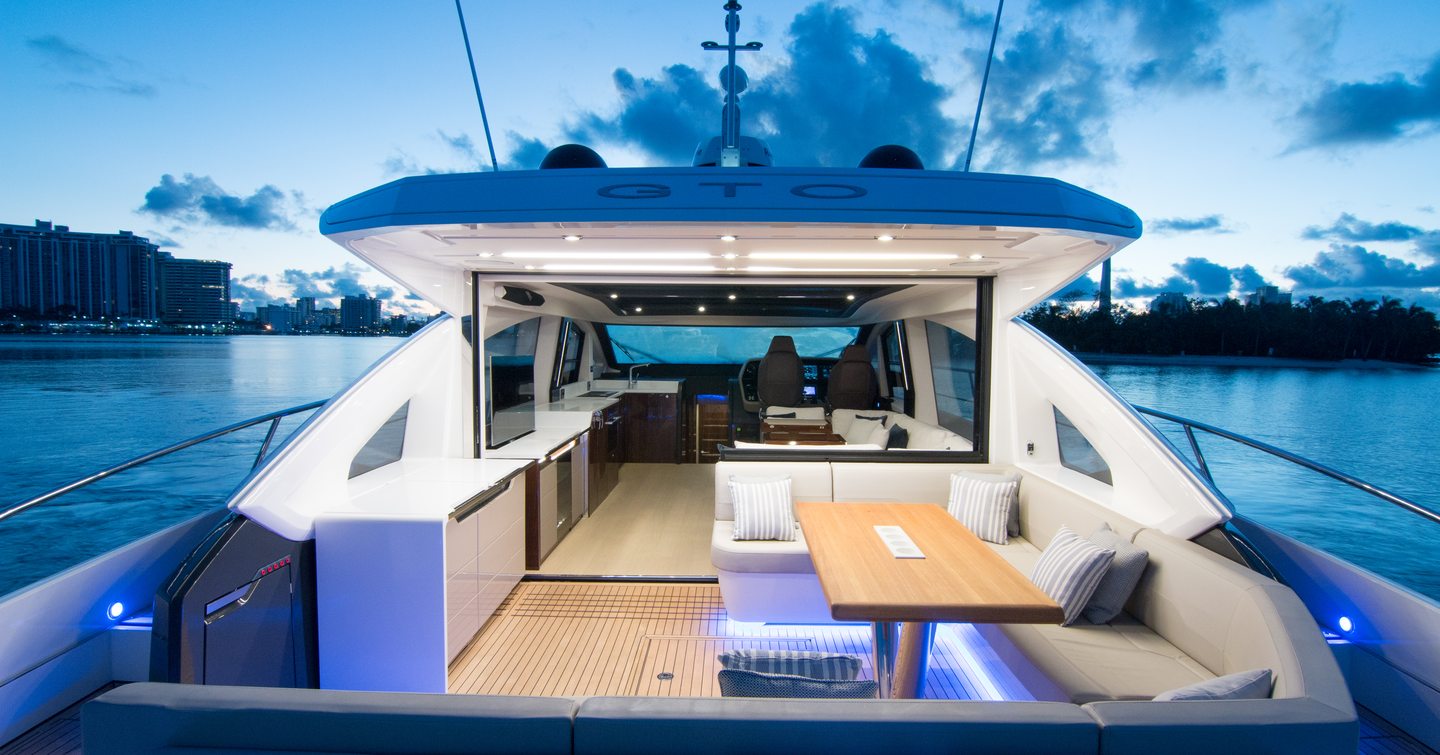
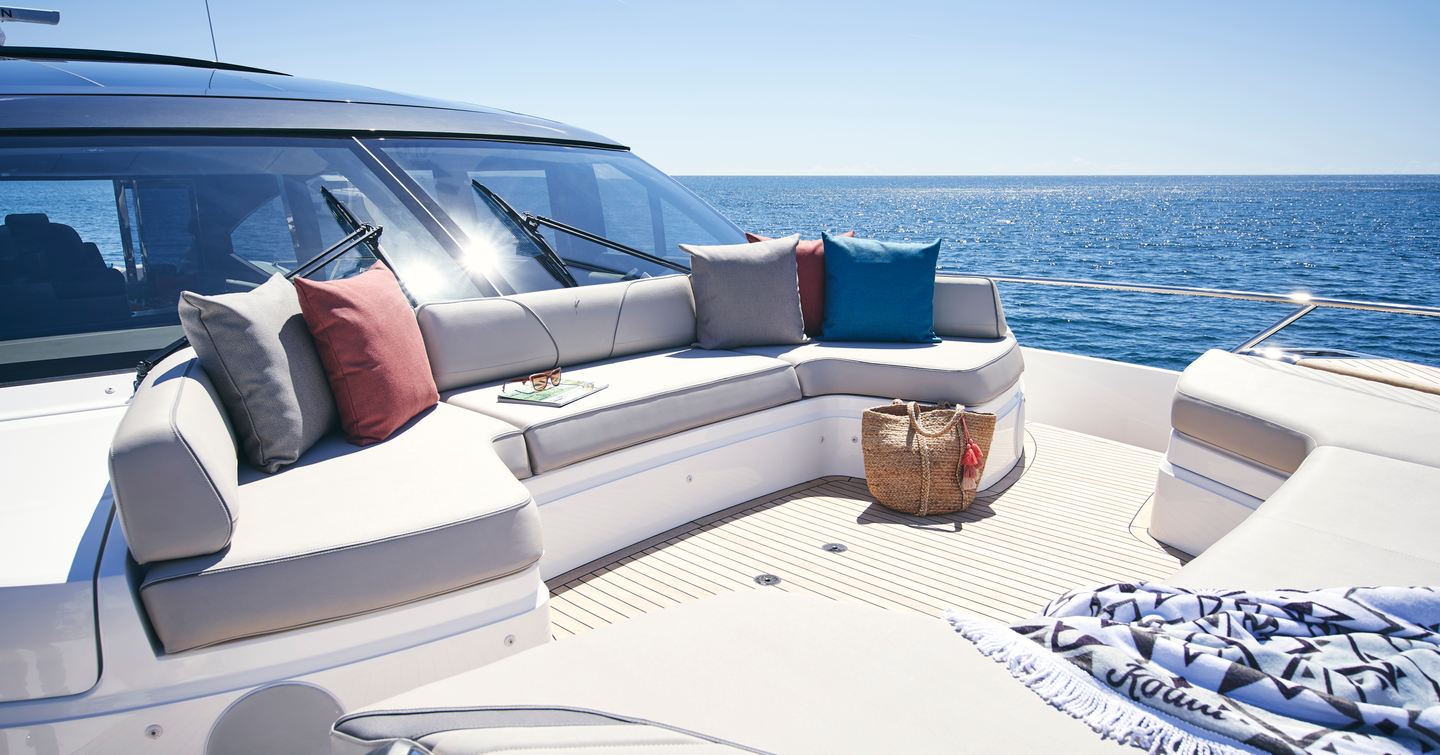
Yachts over 12m (39ft) might well include a tender garage, where a lifting transom door gives access to a large stowage space for a tender and other kit. This keeps the deck tidy and maintains a clean aesthetic onboard.
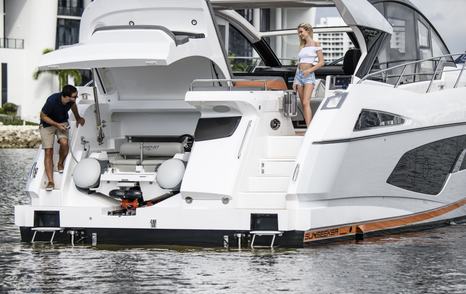

Cabins on today’s sports yachts often consist of full-beam master suites and generous guest cabins, each with its own ensuite. Headroom below decks may be slightly down on a flybridge equivalent, but not considerably.
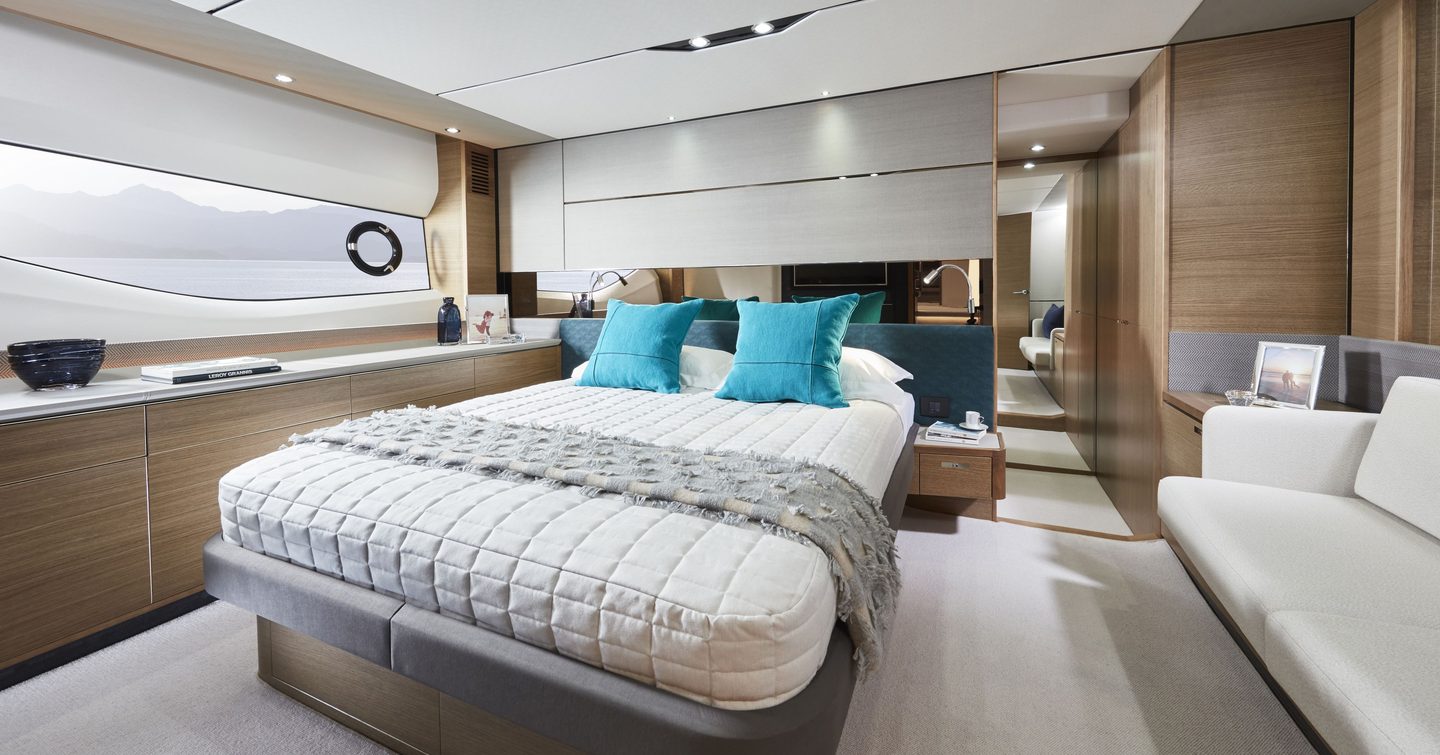


Sports Yacht Performance
Performance should always be a priority for a sports yacht. They have a duty to return a fast, smooth-riding hull, with enough power to easily hit and surpass 30 knots.
The hull design has had to evolve with the sports yachts’ journey from racer to luxury yacht. The earlier slender designs could accommodate a deep vee hull, but today’s bigger, wider, and heavier yachts require a more sophisticated design that mixes the high-speed ride benefits of a deep vee with the lift and planing efficiency provided by flatter hull sections. At its best, this modified hull design will feel responsive, while less successful variants feel sluggish and harsh.



With sports yachts being predominantly owner-operated, a good driving position and helm seat to control the vessel from is massively important. This should include good all-around visibility and excellent seated or standing support. Ideally, it will allow at least one other person to join the skipper and enjoy the ride.
Engine installations and propulsion systems will also vary, with the usual twin diesel engines married to stern, pod, shaft, jet, and surface drives, depending on the size and specification of the vessel.
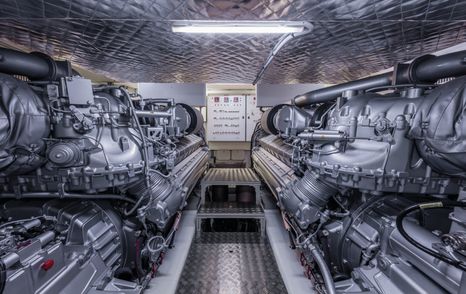

Technical Overview
| Hull Design | Fast planing, deep/modified vee |
| Propulsion | Various drives |
| Performance | Cruising 25-30 knots |
Sports Yacht Propulsion Types
| 10-12m (33-39ft) | stern, pod |
| 12-15m (39-49ft) | stern, pod, shaft |
| 15-20m (49-66ft) | shaft, pod |
| 20m+ (66ft+) | shaft |
